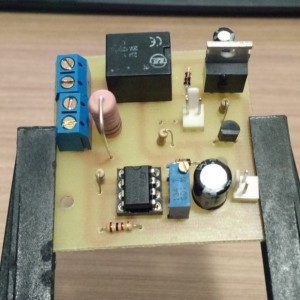Hello, everyone!
This instructable is about a universal short circuit protection that I’ve designed to use in bench power supplies. I’ve designed it to fit in most power supplies circuits. In order to this circuit fit in your bench power supply, you will need to do some calculations, but don’t worry, I’ll explain everything on the next steps.
The circuit is really easy to understand.
A resistor of low value (the resistor value will be explained later) is connected in series with the output of the power supply. As current starts to flow through it, a small voltage drop will appear on it and we will use this voltage drop to determine whether the power supply out put is overloaded or short circuited.
The “heart” of this circuit is an operational amplifier (op amp) configured as a comparator (stage 2).
The way it works is really simple, you just need to follow this rule:
If the voltage on the non-inverting output is higher than the inverting output, then the output is set to “high” level.
If the voltage on the non-inverting output is lower than the inverting output, then the output is set to “low” level.
I put quote marks on “high” and “low” for a easier understanding of the op amp operation. It has nothing to do with logical micro controllers 5 volts levels. When the op amp is in “high level”, its output will be very approximate of its positive supply voltage therefore, if you supply it +12V, the “high output level” voltage will approximate to +12V. When the op amp is in “low level”, its output will be very approximate of its negative supply voltage therefore, if you connect its negative supply pin to ground, the “low output level” will be very near to 0v.
When we use op amps as comparators, we usually have an input signal and a reference voltage to compare this input signal.
So, we have a resistor with a variable voltage that is determined according with the current that flows through it and a reference voltage. Does this ring any bell on your mind? We’re almost finished with the theory be brave and follow me.
For More Details: Short circuit protection for (almost) any power supply

